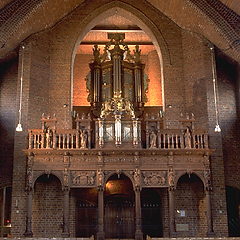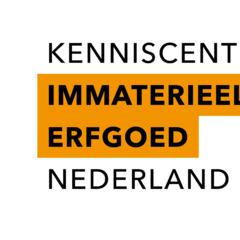Papermaking is creating paper from pulp. This may be pulp from old paper or any plant or tree, as long as it has got fibres. The fibres are torn, cut or shredded into pieces and soaked in water until it becomes a paste. In a scooping vat the mixture (between 1 and 2% fibres, the rest water) is evenly spread. The papermaker moves a screen in a loose frame (the deckle frame) horizontally through the vat until above the water surface. The pulp remains in the sieve. When most of the water has run out, the sieve is turned around with a pressing movement onto a wet felt cloth (this procedure is called koetsen). This sheet-to-be is covered with a felt cloth, on which a new sheet of freshly scooped paper can be put. When a stack has been formed in this way, it is pressed until all the water has gone. Then the sheets can be hung to dry on lines. When dry, they are once more pressed for at least one day and then the paper can get an after-treatment, like a coating (a layer of glue, to make it suitable for writing in ink) or a colour.
Description
Community
Marieke de Hoop creates paper at Papiermakerij de Hoop in Rotterdam. In her workshop, she prepares all the pulp, which is the raw material for making paper, herself. Apart from old paper, the papermakery uses a lot of organic material, for instance, asparagus peelings from the asparagus farmer. Organic material has to be processed quickly, because it immediately starts rotting and therefore stinks. Marieke now has years of experience with the possibilities of drying, cooling, freezing or fermenting this type of organic fibre, which also requires chemical insight.
In 2012, Marieke developed the PapierLab, which has since grown into a pulp and paper workshop where residual streams from the city, port, West Brabant and Westland are examined for the quality of paper or cardboard you can make from them. The PapierLab is also the place where inventors and designers can experiment with paper prototypes and investigate whether they can implement it in a production chain. At the PapierLab, Marieke also gives workshops and master classes. The PapierLab is open Wednesday to Saturday for workshops and appointments.
History
In China, the procedure for making paper developed at the beginning of the second century. Important raw materials were hemp, the bark of the mulberry tree, silk waste and fibres of bamboo reeds. Arabs learned paper-making from Chinese prisoners in the eighth century. In Europe, paper-making has been known since the late 12th century. As far as we know, the first paper mill stood in the Southern Netherlands in 1405.
In the nineteenth century, more and more paper was made by machine. From around 1850, paper was made from vegetable raw materials, such as straw and wood. Besides machine-made paper, handmade paper was still created. This paper, made from rags, was used for more official purposes. Around 1920, the last departments for handmade paper closed in the paper mills. After that, the craft fell into oblivion, until it was picked up again by a single hobbyist around 1950. Since no paper recipes have been archived, current papermakers have to reinvent everything all over again.
In recent years, there has been an increasing interest in papermaking, in some schools children are making paper. The appreciation for the craft and all kinds of special papers is increasing again. Sustainability also plays a role, for example the water used during a papermaking process is filtered so it can be reused. Paper is increasingly being made out of residual materials from horticulture.
Safeguarding
2023-2025
- Set up a Guild, together with two other professional papermakers, allowing more cooperation and better preservation and development of papermaking.
- Realise an intangible cultural heritage spotting production for papermaking, in cooperation with the two Guild partners, to make the craft visible throughout the year.
- Together with the Guild partners, develop a “training course” in traditional papermaking so that knowledge is shared. The craft cannot be passed on digitally; it has to be done from master to apprentice, live.
- Continue to organise workshops, basic courses and master classes.
- Explore the possibilities of putting on paper and professionalising the fermentation research into the process of pre-digestion of organic fibres from waste streams.
- Document the paper experiments that have taken place in the PapierLab and looking for the best way to do this (physically and/or digitally).
- Look for collaboration with a chemist who works in the paper sector or has his/her field of work in circular economy.
- Identify opportunities for collaboration, for example with the foundations around paper history in the Netherlands.
- Look for financial resources to set up and maintain professional digital communication and marketing.
Contact
Papiermakerij de HoopRotterdam
Website



